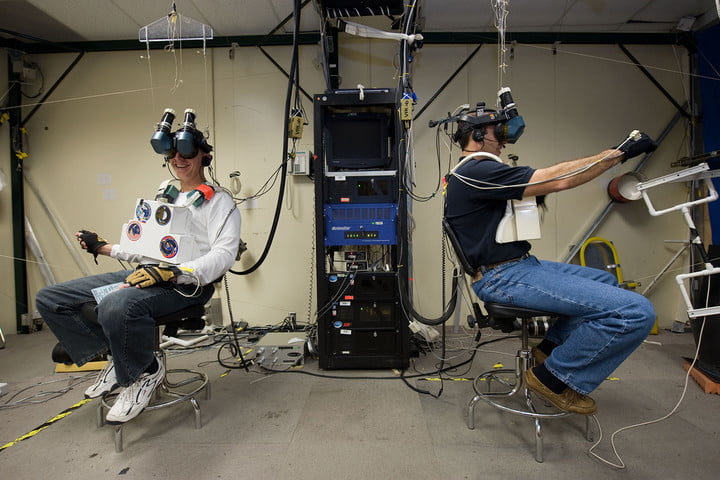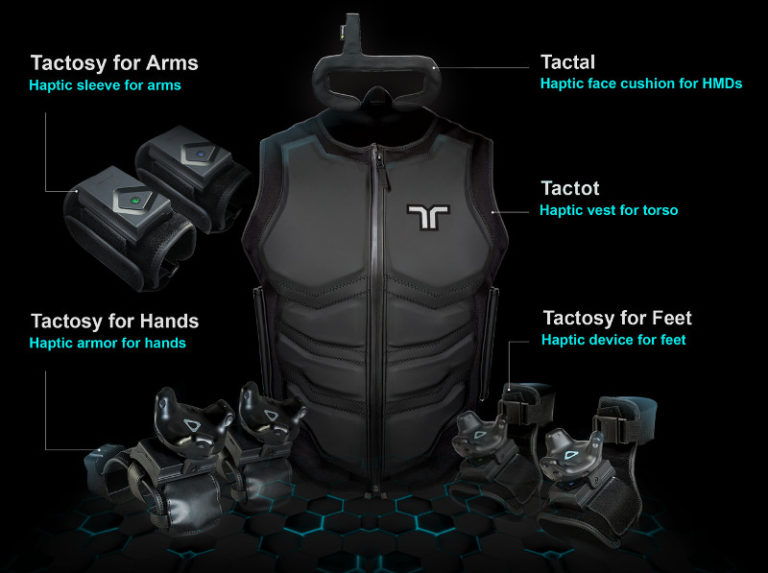Virtual Reality has evolved several folds over the course of history. It has improved in all aspects, especially visual quality, dynamic audio and accurate calibration while interacting with objects and other beings within a game. However, irrespective of real a virtual reality experience might look, there is one predicament which I, and I’m sure many others also face, that is, when you touch something in real life, you can actually feel it. Whether it’s soft or hard, hot or cold, you can sense your nerves getting enlightened by it’s very existence. You can sense the minute electrical signals burst from your hands to your arms and to your brain, literally all the time. There is not a single moment in our lives that we cease to feel. Even in our sleep, our senses possess the strength govern what kind of dreams we have. This unlimited, unending sense of touch is rarely found in virtual reality experiences. Prior to the discussion of “Where is the touch sensation?”, we shall be discussing “WHAT is the touch sensation?”. Anyone who’s seen The Matrix can quote the character Morpheus and say “What is real? How do you define real? Real is just electrical signals passing through your body.” and drop the mic, but how do you reach a point in time where a machine can mimic the exact electrical signals as perceived in real life? To begin, first, let’s cover a brief history of the touch sensors and haptic feedback.

The word “Haptic” comes from the Greek haptikos which translates to “the sense of touch”. Haptic systems have been used in various endeavors throughout the age of technology, initially in aircrafts, to provide the pilot a physical response of both minimal turbulence and also contact between the landing gear and the airstrip. Similarly, NASA’s Ames Research Center created a Virtual Reality headset back in the 1980s. This headset came with two plug-in gloves as well. These gloves were lined with a sensitive mesh which not only detected movement of the hands, but gave minimal feedback to the user as well. However, this technology was quite inaccurate, and the idea was dropped by NASA. However, as far as entertainment on individual levels is considered, it wasn’t until 1994 that Aura created it’s “Interactor Vest”. Aura patented specially designed electromagnetic speakers which could convert deep bass sounds to vibrations. Even though the Interactor Vest was not compatible with the VR headsets of the time (since, let’s be honest, they were all really…really bad), it still connected to a speaker outlet, TV and VCR. Aura even made a cushion that acted just like the Interactor Vest, but was a much more casual and comfortable approach, something on which the viewer could relax and enjoy their content. Even though the Aura Interactor sold several copies, it had limited usage and wasn’t compatible with a lot of content (content would only be compatible if it has astounding diverse groups of sound, like really deep bass and high treble), and so, it never really caught on, until recent times when the idea of a wearable haptic feedback mechanism was rejuvenated.

Haptic feedback mechanisms utilize several different types of technology, including eccentric rotating masses or ERMs. An ERM consists of an unevenly weighted object, which would spin due to a motor. The momentum of this uneven weight would cause the ERM case to shake rapidly, thus causing a vibrating feeling wherever the ERM was located. Similarly, modern day devices have now started utilizing Linear Resonance Actuators or LRAs. These involve a unified weight, which is moved in reciprocal manner with the use of a magnetic voice coil. in 2013, Disney launched it’s AIREAL program, which enabled users to touch and feel non-physical objects. The unit consisted of a camera that detected the user’s body, and a vortex projector which would shoot balls of air according to whatever the user had to feel (for example: a small, continuous burst was used to simulate an insect crawling on the user’s skin, or a sudden, bigger burst would be used for the blow-back from a gun).

Now, over the years many devices including smartphones, PlayStation’s Dual-Shock controller and even specially designed gaming chairs now have haptic feedback mechanisms. So where does that leave Virtual Reality? Providing haptic feedback is quite difficult with the dynamics of a virtual world in which the user his/herself is immersed, since most VR headsets require joy sticks, and comprise of only the headset itself and no additional devices. However, over many years, arcade zones have had more and more game-stations that provide haptic feedback to the players by means of specialized gloves and vests. Similarly, there IS one company that is currently producing a vest, glove set and even shoe pair, which provides haptic feed by connecting to your VR headset.

bHaptics is the provider of the “Tactsuit”, an entire suit which you can wear for a more dynamic VR experience, allowing you to feel precise force with over 70 different haptic points, including your torso, sleeves, face and feet. The Tactsuit is fully compatible with the HTC Vive/Vive-Pro, Oculus Rift/Rift-S & Windows MR headsets. The individual items are machine washable, as the clothed parts can be separated from the feedback providers. The full pack even comes with a backpack holder, which can hold a backpack PC, making it portable with heavier graphics as well. Similar designs are being practiced by various companies around the world, some focusing on feedback accuracy, while others focus on the portability and usability of all-over haptic feedback mechanisms. In the near future, projects like AIREAL, VRgluv, NullSpace and the TeslaSuit (all in development phases) might erase the need for any feedback wearable devices entirely.
